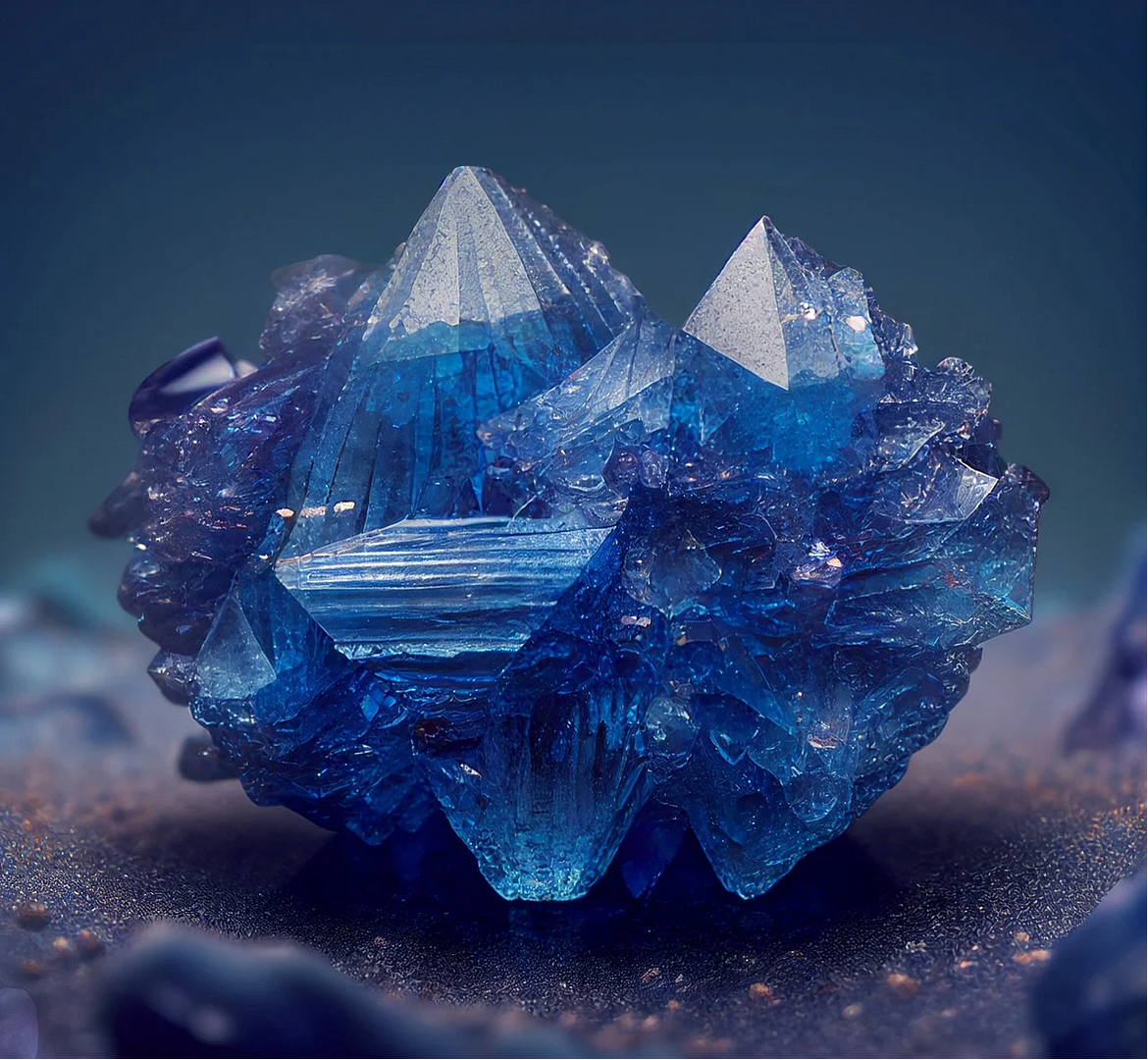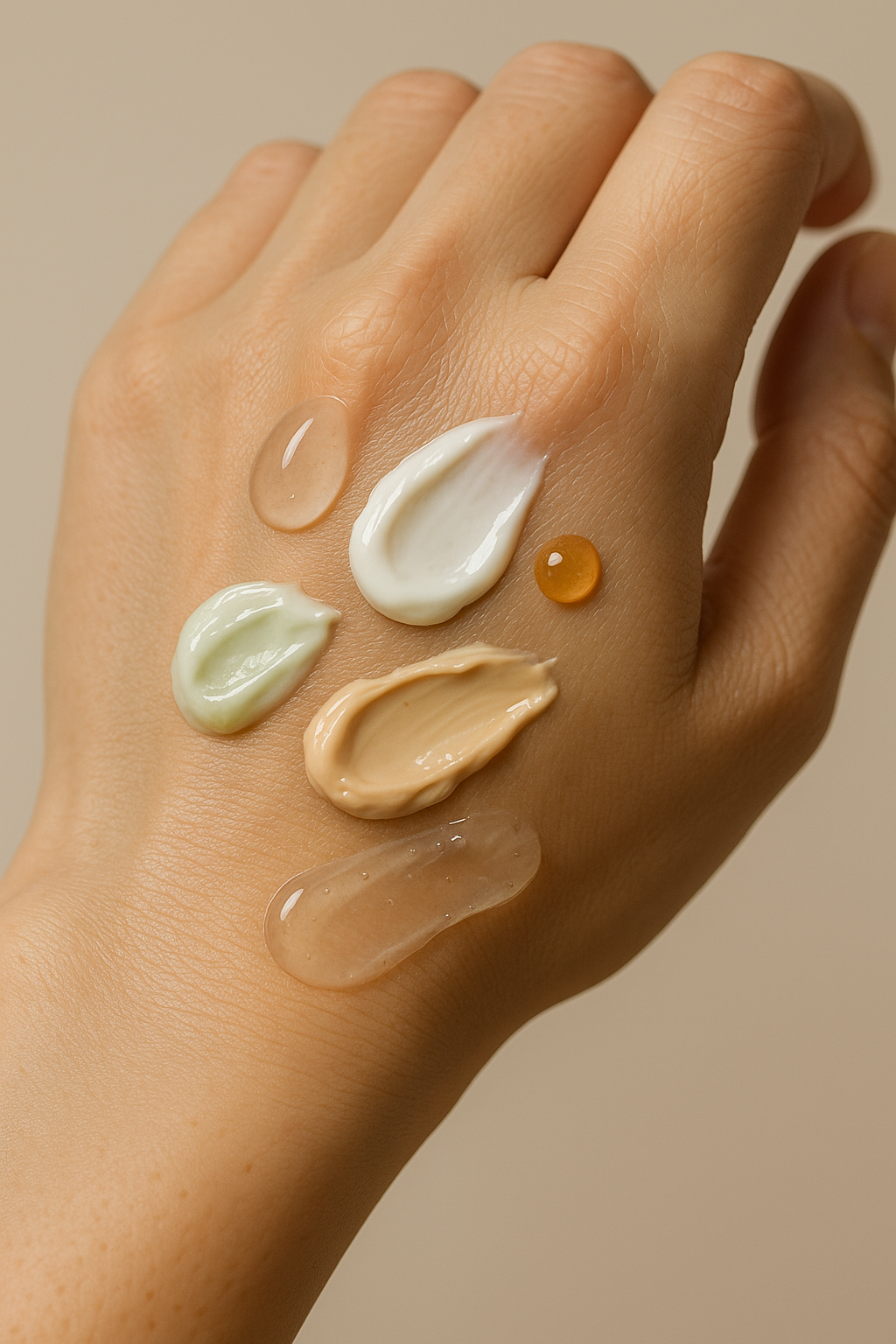
Imagine a gemstone that captures the essence of a tropical paradise, with hues as blue as the Caribbean Sea and a calming energy that washes over you like a gentle ocean breeze. This is the magic of Larimar, a rare and exquisite gemstone found only in one place on Earth: the Dominican Republic.
What is Larimar?
Larimar is a type of stone called pectolite. It’s known for its pretty blue color, which can range from light sky blue to deep ocean blue. Sometimes it has white patterns that look like clouds or waves. Larimar is only found in one place in the whole world – a small area in the Dominican Republic.
The Discovery of Larimar
The story of how Larimar was found is interesting. In 1916, a priest named Miguel Domingo Fuertes Loren asked the government if he could look for a blue rock he had seen in the Barahona Province. But no one took him seriously at the time.
It wasn’t until 1974 that Larimar was really discovered. A man named Miguel Méndez and a Peace Corps volunteer named Norman Rilling found some blue rocks on a beach. Méndez named the stone “Larimar” by combining his daughter’s name, Larissa, with “mar,” the Spanish word for sea.
Why is Larimar Special?
Larimar is special for many reasons:
- It’s rare: Larimar is only found in one small area of the Dominican Republic. This makes it very unique.
- Beautiful color: The blue color of Larimar is unlike any other stone. It reminds people of the Caribbean Sea.
- Patterns: Each piece of Larimar has its own unique patterns. Some look like clouds, others like waves or sea foam.
- Cultural importance: For the people of the Dominican Republic, Larimar is a national treasure. It’s an important part of their culture and economy.
How Larimar is Formed
Larimar is formed deep in the earth. It’s created when hot water carrying minerals flows through rocks. Over time, these minerals cool and form crystals. The blue color of Larimar comes from copper in the stone.
The Larimar we find today was formed millions of years ago. It’s only now coming to the surface because of movements in the earth and erosion (when wind and water wear away rocks).
Mining Larimar
Getting Larimar out of the ground isn’t easy. Miners have to dig deep holes and tunnels to find it. The mining area is in a place called Los Chupaderos, about 10 kilometers from the town of Barahona.
Mining Larimar is hard work and can be dangerous. The miners use simple tools like picks and shovels. They have to be careful not to damage the stones while digging them out.
Grading Larimar
Not all Larimar is the same quality. Experts grade Larimar based on several things:
- Color: The best Larimar has a deep, intense blue color. Lighter blues are less valuable.
- Pattern: Stones with interesting patterns are worth more than plain ones.
- Clarity: Clear stones without cracks or flaws are more valuable.
- Size: Bigger pieces of Larimar are rare and more expensive.
Larimar in Jewelry
Larimar is most often used in jewelry. Its beautiful blue color makes it perfect for many types of jewelry:
- Necklaces: Larimar pendants are very popular. They often have silver or white gold settings to show off the blue color.
- Rings: Larimar rings can be simple with one stone or more complex with multiple stones and designs.
- Bracelets: Larimar beads are often used in bracelets, sometimes mixed with other stones.
- Beautiful larimar earrings: Larimar earrings come in many styles, from simple studs to fancy dangling designs.
- Brooches: Some artists use larger pieces of Larimar to create unique brooches.
When making Larimar jewelry, artists have to be careful. The stone is softer than many other gems, so it needs gentle handling and protection.
Caring for Larimar Jewelry
If you have Larimar jewelry, you need to take good care of it:
- Be gentle: Don’t bump or scratch your Larimar jewelry. It can chip or crack if you’re not careful.
- Clean it carefully: Use warm water and mild soap to clean Larimar. Don’t use harsh chemicals or ultrasonic cleaners.
- Store it safely: Keep Larimar jewelry in a soft cloth or jewelry box. Don’t let it rub against harder stones or metals.
- Avoid heat and sunlight: Too much heat or direct sunlight can fade Larimar’s color over time.
The Meaning and Beliefs About Larimar
Many people believe Larimar has special powers or meanings:
- Calming stone: Some think Larimar can help reduce stress and bring peace.
- Connection to nature: The blue color reminds people of the sea and sky, making them feel connected to nature.
- Healing properties: In crystal healing, some believe Larimar can help with throat and chest problems.
- Creativity boost: Others think Larimar can help increase creativity and self-expression.
- Love and relationships: Some say Larimar can help improve communication in relationships.
While these beliefs aren’t scientifically proven, many people find comfort and inspiration in them.
Larimar in Dominican Culture
For the people of the Dominican Republic, Larimar is more than just a pretty stone. It’s a source of pride and an important part of their economy:
- National symbol: Larimar is seen as a national treasure, representing the beauty of the Dominican Republic.
- Tourism: Many tourists visit the Dominican Republic hoping to buy Larimar jewelry or even visit the mines.
- Local economy: Mining and selling Larimar provides jobs for many Dominicans.
- Artistry: Dominican artists are known for their skill in creating beautiful Larimar jewelry.
Larimar in Fashion
Larimar isn’t just for traditional jewelry. It’s becoming popular in fashion too:
- High-end designers: Some famous fashion designers are using Larimar in their collections.
- Casual wear: Larimar beads are being used in more casual jewelry like surfer-style bracelets.
- Home decor: Some artists are using larger pieces of Larimar to make decorative items for homes.
- Color inspiration: The unique blue of Larimar has inspired clothing and accessory colors.
Collecting Larimar
Some people enjoy collecting Larimar as a hobby:
- Raw stones: Collectors often look for uncut pieces of Larimar to see its natural beauty.
- Rare patterns: Pieces with unusual patterns or colors are prized by collectors.
- Historical pieces: Early Larimar jewelry, especially from the 1970s when it was first discovered, can be valuable.
- Larimar art: Some collectors focus on artistic pieces made with Larimar, not just jewelry.
The Future of Larimar
As Larimar becomes more popular around the world, there are some concerns:
- Limited supply: Since Larimar is only found in one small area, there’s worry about how long the supply will last.
- Environmental impact: Mining can harm the environment if not done carefully.
- Fake Larimar: As the stone becomes more valuable, some people try to sell fake Larimar.
- Sustainable practices: There are efforts to make sure Larimar mining and jewelry-making are done in ways that protect both the environment and the workers.
Conclusion
Larimar is a beautiful and unique stone that captures the colors of the Caribbean Sea. From its interesting discovery story to its use in stunning jewelry, Larimar continues to fascinate people around the world. Whether you’re interested in wearing Larimar, collecting it, or just learning about it, this blue treasure from the Dominican Republic has something special to offer. As we look to the future, it’s important to appreciate and protect this rare gem, ensuring that its beauty can be enjoyed for generations to come.



